
Admiral of the Fleet John Cronyn Tovey, 1st Baron Tovey,, sometimes known as Jack Tovey, was a Royal Navy officer. During the First World War he commanded the destroyer HMS Onslow at the Battle of Jutland and then commanded the destroyer Ursa at the Second Battle of Heligoland Bight. During the Second World War he initially served as Second-in-Command of the Mediterranean Fleet in which role he commanded the Mediterranean Fleet's Light Forces. He then served as Commander-in-Chief of the Home Fleet and was responsible for orchestrating the pursuit and destruction of the Bismarck. After that he became Commander-in-Chief, The Nore with responsibility for controlling the east coast convoys and organising minesweeping operations.
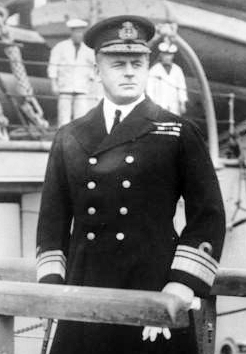
Admiral of the Fleet The Honourable Sir Hedworth Meux was a Royal Navy officer. As a junior officer he was present at the bombardment of Alexandria during the Anglo-Egyptian War.

Admiral of the Fleet Rosslyn Erskine Wemyss, 1st Baron Wester Wemyss,, known as Sir Rosslyn Wemyss between 1916 and 1919, was a Royal Navy officer. During the First World War he served as commander of the 12th Cruiser Squadron and then as Governor of Moudros before leading the British landings at Cape Helles and at Suvla Bay during the Gallipoli campaign. He went on to be Commander of the East Indies & Egyptian Squadron in January 1916 and then First Sea Lord in December 1917, in which role he encouraged Admiral Roger Keyes, Commander of the Dover Patrol, to undertake more vigorous operations in the Channel, ultimately leading to the launch of the Zeebrugge Raid in April 1918.
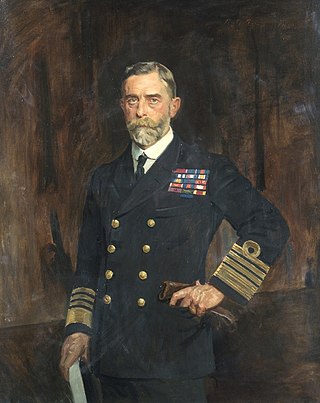
Admiral of the Fleet Sir Charles Edward Madden, 1st Baronet,, was a Royal Navy officer who served during the First World War as Chief of the Staff to Sir John Jellicoe in the Grand Fleet from 1914 to 1916 and as Second-in-Command of the fleet under Sir David Beatty from 1916 to 1919. He was Commander-in-Chief of the Atlantic Fleet after the war and served as First Sea Lord in the late 1920s. In that role, in order to avoid an arms race, he accepted parity with the United States in the form of 50 cruisers defending his position on the basis that he only actually had 48 cruisers anyway.

Admiral of the Fleet Sir William Henry May was a Royal Navy Officer. As a junior officer he took part an expedition to rescue Commander Albert Markham who had got into difficulty trying to reach the North Pole via Smith Sound, the sea passage between Greenland and Canada's northernmost island, Ellesmere Island.

Admiral of the Fleet Sir Cecil Burney, 1st Baronet, was a Royal Navy officer. After seeing action as a junior office in naval brigades during both the Anglo-Egyptian War and the Mahdist War, he commanded a cruiser in operational service during the Second Boer War. As a flag officer he commanded the Plymouth Division of the Home Fleet, the 5th Cruiser Squadron, the Atlantic Fleet and then the 3rd Battle Squadron.

Admiral of the Fleet Sir Charles Morton Forbes, was a Royal Navy officer. He served in the First World War, seeing action in the Dardanelles campaign and at the Battle of Jutland and, as captain of a cruiser, was present at the surrender of the German fleet. During the Second World War, he served as Commander-in-Chief, Home Fleet: his fleet suffered heavy losses including the aircraft carrier HMS Glorious and nine destroyers during the Norwegian campaign in Spring 1940. He went on to be Commander-in-Chief, Plymouth in May 1941 and in that capacity he organised the defence of Plymouth from air attack, prosecuted attacks on enemy shipping using the harbour at Brest as well as other ports along the French coast, and also initiated the St Nazaire Raid in March 1942 before retiring in August 1943.

Admiral Sir William Christopher Pakenham, was a senior Royal Navy officer. He served as a British observer with the Imperial Japanese Navy during the Russo-Japanese War; during the First World War he commanded the 2nd Battle Cruiser Squadron at the Battle of Jutland, and from December 1916 was Commander-in-Chief of the Battle Cruiser Fleet.
Admiral Philip Nelson-Ward was a British Royal Navy officer and courtier.
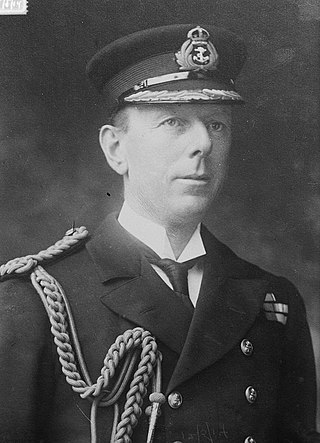
Admiral Sir Stanley Cecil James Colville, was a senior Royal Navy officer.

Admiral of the Fleet Sir Osmond de Beauvoir Brock, was a Royal Navy officer. Brock served as assistant director of naval intelligence and then as assistant director of naval mobilisation at the Admiralty in the early years of the 20th century. During the First World War Brock commanded the battlecruiser HMS Princess Royal at the Battle of Heligoland Bight and at the Battle of Dogger Bank. He then commanded the 1st Battlecruiser Squadron with his flag in HMS Princess Royal at the Battle of Jutland.
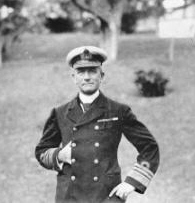
Admiral Sir George Edwin Patey, was a senior officer in the Royal Navy.
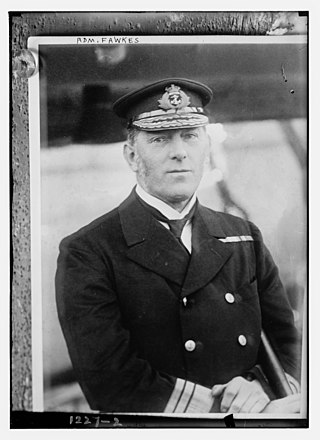
Admiral Sir Wilmot Hawksworth Fawkes, was a Royal Navy officer who went on to be Commander-in-Chief, Plymouth.

Admiral Sir Alfred Leigh Winsloe, was a Royal Navy officer who went on to be Commander-in-Chief, China Station.

Admiral Sir Robert Swinburne Lowry was a Royal Navy officer who became Admiral Commanding on the Coast of Scotland.
Vice Admiral Everard John Hardman-Jones, CB, OBE was a Royal Navy officer who became Commander-in-Chief, Coast of Scotland.
Admiral Hugh Pigot Williams was a British officer of the Royal Navy. In 1910–1912, while a Rear Admiral in the Royal Navy, he served as head of the British naval mission to the Ottoman Empire and Fleet Commander of the Ottoman Navy, at the rank of Liva Amiral.
Admiral Sir Sidney Robert Bailey, was a Royal Navy officer who served as President of the Royal Naval College, Greenwich from 1937 to 1938.
Admiral Sir Alfred Wyndham Paget, was a Royal Navy officer who became Senior Officer on the Coast of Ireland.
Admiral Sir Arthur Murray Farquhar, was a British Royal Navy officer in the years before the First World War.












